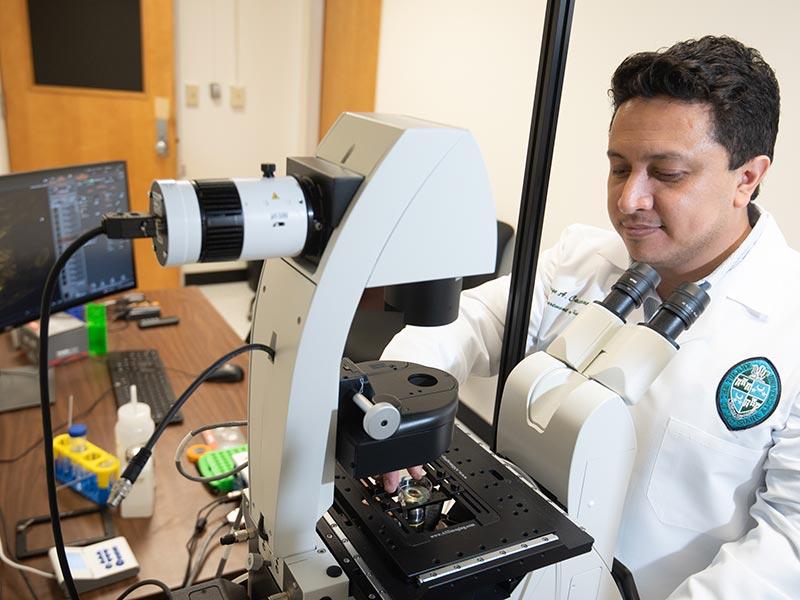NIH awards $2.4 million grant to study link between obesity and lymphatic dysfunction
Lymphedema is a painful chronic disease where edema, or a buildup of fluid, results from dysfunction of the lymphatic system, causing swelling, heaviness and tightness feeling at the affected limb or tissue, and recurrent infections. The lymphatic system works in parallel with the cardiovascular system to move fluid throughout the body and between lymph nodes. When this dysfunction occurs, the lymphatic system cannot transport essential immune cells, proteins, and lipids where they need to go within the body. Lymphedema occurs in higher numbers in breast cancer patients following surgical and radiotherapeutic intervention and in people with obesity, who are more likely to deal with dysfunction of the lymphatic system.
Researchers at Tulane University are looking into understanding how inflammatory diseases and dysfunction of the lymphatic system are connected, with their eyes on a potential therapy for people with lymphedema. The National Institutes of Health has awarded a $2.4 million grant to lead investigator Jorge Castorena-Gonzalez, PhD, an assistant professor at the Tulane University School of Medicine, to study the link between obesity and lymphatic dysfunction.
Previous research by Castorena-Gonzalez’s group and others has established that there is a link between lymphatic dysfunction and obesity. It is a link that goes both ways in what Castorena-Gonzalez calls a “disease-promoting feedback loop”: obesity contributes to lymphatic dysfunction and lymphatic dysfunction can make obesity worse. He and his team hope to learn more about that connection and use it to develop a therapy that might help people suffering from lymphedema.
“Right now, there are no established treatments or a cure for lymphedema,” said Castorena-Gonzalez. It’s one of the reasons he started studying lymphatic dysfunction in the first place. Currently, people with lymphedema can only receive palliative care, like massages to manually drain the lymphatic fluid out of the affected tissues, most commonly the upper and lower extremities. It is important to note, however, that lymphatic dysfunction and edema can occur anywhere in the body, including in critical organs.
The team will use a mouse model to look at how inhibiting certain proteins, called PAI-1 and Trpv4, might help improve lymphatic function. Although this grant is specifically looking at lymphatic dysfunction and obesity, Castorena-Gonzalez hopes it will help people with lymphatic dysfunction from other inflammatory diseases as well. “Obesity and metabolic syndrome are the areas that we have been focusing on, but all of these elements of the progression of the disease appear to be common to many other inflammatory diseases,” said Castorena-Gonzalez.
The proteins the team is looking at are also involved in other diseases, including atherosclerosis, thrombosis, and cancer, among others, and some drugs being used to inhibit them are in clinical trials. If the results of this study are promising, Castorena-Gonzalez hopes to apply for another grant to look into repurposing those drugs to treat lymphedema. As with anything that requires clinical trials, it will take some time to get to the point where it can be used as a treatment, but Castorena-Gonzalez hopes that this grant is a step in eventually helping patients.
Although this grant does not cover a clinical trial, Castorena-Gonzalez said, “We're trying to contribute to the field so that hopefully we can give an alternative to these patients who right now don't have any therapeutic options.”
This research will be funded by the National Heart, Lung, and Blood Institute of the National Institutes of Health under Award Number R01HL168568.

